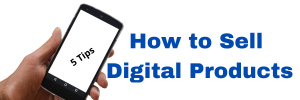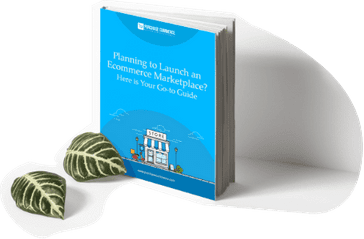How to Start an Online Ecommerce Store with Purchase Commerce
A few years ago, creating an online store is a complex process for medium and small businesses. It needs to know the code and you need to work harder to make the first sale had to code your fingers to the bone to make your first sale. Buy Luckily, everything is different now. Now it is easier and even there also a faster way to start an online store from scratch within just a short space of time.
But no matter how hard it may seem, here’s a starting-from-scratch guide that will help you set up an ecommerce business.
7 Things to Decide a Before Starting Ecommerce Store
Even having a great website does not result in sales if you did not have a proper plan before starting the ecommerce store. Here are the things that needed to do before starting your ecommerce store
- Do you want to sell physical or digital products or both?
- Are you selling locally or internationally?
- Are you selling products or services?
- Are your orders going to be fulfilled by someone else?
- Get to know your competition
- Get to know your customer base
- Understand what web hosting is about
1. Do you want to sell physical or digital products or both?
Different types of products will need different software to make selling them possible; two of the most common scenarios are selling physical or digital products:
- Physical — simply speaking, this is everything that needs to be physically shipped to the customer
- Digital — all downloads, PDFs, eBooks, content access, software, subscriptions, memberships and so on.
2. Are you selling locally or internationally?
If you want to sell outside your country, then many complications things need to addressed before starting it. Starting with taxation issues, all the way to shipping internationally.
The way to think about this question is to focus on the ‘most likely scenario’. So, for instance, even though you’re probably tempted to offer your products worldwide, will that be the core of your business right from day one? If not, go with ‘local’ for this one.
What’s your primary market location?
This is about the location of your target customer base.
Some helpful questions:
- Are you going to sell to a local market — your city or county?
- Are you going nationwide?
- Are you going worldwide?
Zooming in on your target market can help you discover unique promotion opportunities or reveal some details about your core customers that may not be visible on a larger scale.
3. Are you selling products or services?
Some people also like to think about this to sell a thing vs selling your time.
If you’re only going to be selling services, you may not even need an e-commerce setup. A simple contact form may be enough since you’re going to handle all the negotiations and payments later on.
In most cases, you’re going to go with ‘products’ here.
4. Are your orders going to be fulfilled by someone else?
In the classic model of selling online, it’s you who handles the entire process of getting the product ready and then shipping it to the customer.
But there are other options:
-
Dropshipping: The customer buys a product from your website, but then the product is fulfilled by a third-party — usually, the original manufacturer. In this model, you don’t have to keep an inventory of the product, and, instead, you’re the middleman who finds the customer and sells them someone else’s product.
5. Get to Know Your Competition
The first order of business is to find out who your competition is.
We want to learn what works in the niche, both in terms of the products that sell well and the marketing methods that are effective and can be emulated.
We want to learn more about the customer base, what they expect, what they like to buy and what sort of marketing messages resonate with them.
We want to use the insights we get to then plan our online store launch.
6. Get to Know Your Customer Base
The customer base can take some effort to find.
First off, don’t make the biggest mistake of them all - thinking you can sell to everyone.
This is a common mistake. We’re used to seeing huge brands that do, indeed, sell to everyone, so we think we can be like them.
The first thing you can do is use online tools to get some raw data on the customer demographics your competition caters to.
The goal of keyword research is to find out what’s popular in your niche.
Keyword research is the process of finding out the keywords people use when looking up a topic/product on Google.
Once you know what those keywords are, you can offer similar products and aim to rank for those keywords as well, thus getting people to see your website/store.
7. Understand What Web Hosting Is About
I’ll keep this section brief since hosting is a bit of a boring topic. That said, it’s also essential to the existence of your e-commerce store. You can’t start an online store without web hosting.
In simple terms, hosting is where your website is kept and from where it’s being served to your audience and customers.
A server is very similar to a standard computer that’s hooked up to the web and turned on 24/7.
Whenever a visitor goes to your store, the website is fetched from the server and the contents of it are sent to the visitor’s web browser. Without quality hosting, you’ll lose sales.
Pick an Ecommerce Platform to Build Your Ecommerce Store
Once you’ve decided what you’d like to sell, it’s time to choose where you’ll sell. While there are benefits to selling via marketplaces like Amazon or eBay, it’s best to think of these as marketing channels rather than your sole means of retail.
These marketplaces can introduce your brand to consumers, but for long-term success, selling on an ecommerce platform that will allow you to control your brand
An ecommerce platform includes all the tools and features you need to build a profitable online store very quickly. An ecommerce site must include a shopping cart, product pages, your choice of customizable theme, and ideally some built-in search engine optimization.
If you need to run a successful online business, then you need to check the quality of the platform. When selecting an ecommerce platform look at the built-in features, theme selection, and available tools for managing your site and serving customers to be best.
Your website builder should be easy to work with. They must have additional features that attract more shoppers to your site.
It is important to have an attractive and customizable theme to match your brand. Make sure to improve SEO on every page and access to multiple payment methods.
Customers appreciate being able to pay with more than just their credit card, so implementing more than one payment gateway will earn you more sales. There are a lot of ecommerce platforms out there that make it easy to get started selling online, so look for a platform that boasts:
- A high percentage of uptime
- Professionals who can help you get started and grow
- SEO-friendly features
- Unlimited support
- Powerful integrations
- Easy and secure payment processing
- Beautiful themes and a custom design option
Essential of the Payment Gateway
Have a robust payment gateway for your online store. Some customer ends their transaction think it not safe to do in some unknown payment gateway. So, prefer using a popular payment gateway with the necessary security preference.
There are different ways of accepting payments. You can use credit cards online via payment gateway, bank account, cash on delivery, gift certificate, and many other ways.
If you are global, then go along with their popular local payment methods for each country.
You can’t neglect taxes unless you want to deal with some severe penalties. So, it’s necessary to have a tax calculator. Providing a quick tax setup is best for completing payment easily.
Put Your Shipping Services to be the Best
An online store needs to handle shipping and managing your inventory in a way that will not bother you in handling. In simple it needs to track inventory and shipping automatically.
Shipping can make or break your online business. If you choose the wrong shipping partner or shipment method, you may be left with overwhelming shipping costs or your customers may suffer an unpleasant shopping experience.
Just imagine how your buyer would feel if his package arrived all messed up and damaged. So, avoid an unsafe mode of shipping.
Think about different options for different shipping zones. You can offer free in-store pickup for local businesses. But you still might need an option to deliver your goods to other states or overseas.
Give your customers the most accurate shipping quotes available with real-time prices.
Branding Your Online Shop and create Identity
Once you are done with building your online store, the next is how you are going to make it as a brand or how you’re going to make the people remember your online store or buy through your store. You have to make your audience believe your store is best among the rest.
Do the below thing to achieve a unique position for your ecommerce business above the competition:
- A logo is one that will come in the audience’s mind when the thing of any product or service. Get a logo that does not only help in establishing credibility and build trust but also be easy to recognize. (avoid stock images).
- Establish a social media connection for your ecommerce brand. Always use the same logo and credited point in all platforms.
- Careful with your text. Have a text at an extreme level but unique avoid copying text.
- Communicate your message in a way that makes that should convey a singular idea that your products are valuable and best bought here.
Develop a Complete Ecommerce Marketing Plan for Your Store
- Now that you’ve defined your goals, chosen a niche and have at least a general idea of what your ideal customer is, it’s time to sketch a step-by-step marketing plan. It should help you sell online more efficiently.
- Once you have a brand, then you have a market it well to reach through different marketing channels like paid and organic marketing. Paid marketing Pay-per-click campaigns and affiliate sale networks help people to recognize you. Social media, SEO, email & content marketing is, as you may guess, all about organic.
- At the end of successful marketing, you have to increase the traffic or revenue. For this, you need a strategy that gives your goal a path. Building authority, using top-funnel organic traffic and so on can be called a strategy.
- Action is the way you are going to execute your strategy like collect email addresses, run email marketing campaigns, launch PPC ads, create an online store on Facebook.
- PPC advertising can help you boost your online sales. It will provide a wide range of ways to attract shoppers to your ecommerce site.
- One of such strong programs is Google AdWords. It allows you to run campaigns such as search, display, video, and remarketing ads.
- Not only social media can help you understand who your audience is and what their needs are. It is also a great place to generate leads for your online business. Do not underestimate this source of traffic as it works.
- Content is king in marketing. So, Start writing a Blog that helps in the drive Traffic to Your Online Store. Behind every successful ecommerce business, there will be a great blog.
- Blogging generates traffic for your ecommerce site, tells the story of your brand to your potential customers and educates them, helps you rank higher in search results, builds trust and authority.
Optimize Your Online Store for Search Engines
As per stats, 81% of shoppers make quick online research before buying things online. If you want to grab the user’s attention then you should on the top of the page. So, make your website SEO friendly.
Here are several things you need to do to improve SEO:
- Keyword Research
- On-page and Off-page optimization
- Technical SEO and link building.
Conclusion
Once you conclude on all things, then built and launched your online store and now, you’re in the marketing digital world. One thing you should continue is your marketing efforts, with constant improvement.
Purchase commerce has everything that needed to run an ecommerce store successfully. Purchase Commerce allows to maintain your relationship with your customers and always look for ways you and your business can do better in time. Running an online store is a never-ending process, Purchase Commerce provides you every tool that handles some process automatically.











